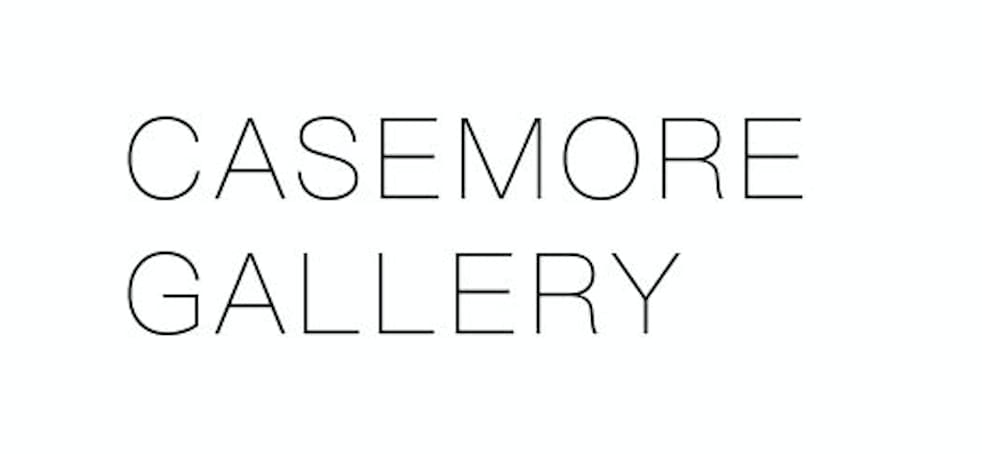Casemore Gallery is pleased to present Sonya Rapoport: Fabric Paintings opening on Saturday, December 11th, 2021, with a reception from 3-5pm. The exhibition features rarely-seen sculptural canvases and bold painting on patterned fabric by the late Bay Area artist Sonya Rapoport (1923-2015).
First shown in 1967, Rapoport’s ‘Fabric Paintings' represents a radical departure for the artist who had previously been recognized as an Abstract Expressionist painter. This exhibition reveals the origin of Rapoport’s systematic abstraction of the female form and her first experiments with painting on found materials.
Rapoport’s paintings anticipate the Pattern and Decoration movement of the mid-1970s, which explored textiles and ornamentation. While shopping for quilting materials with her daughter, Rapoport encountered gaudy, commercially printed upholstery fabric, and challenged herself to create “ostensibly respectable abstractions” on this “kinky” substrate. The resulting dimensional paintings seemingly owe much to the sculptural excesses and junk-store aesthetics of funk art. Although Rapoport was not considered to be part of this movement, curator Peter Selz of the Berkeley Art Museum credited her with suggesting the title Funk for his seminal exhibition, which had opened earlier in 1967.
The curvy organic shapes in Rapoport’s Fabric Paintings can be traced back to large scale drawings and collages from 1964, with titles such as Incubation. A male critic of the day referred to these as “floral-sexual blends,” and made much of what he saw as “bosoms and derrieres", a nod to the steep climb Rapoport faced as a female artist. In the early 1970s Rapoport made these forms central to her practice, creating a set of stencils that she deployed as a feminist pattern language.
In 2012, Rapoport was invited to exhibit this work at Fresno Art Museum. Informed by a career of conceptual experiments, interactive new media work, and deep engagement with feminist themes, Rapoport created a new piece, ImPOSSIBLE CONVERSATIONS?. These collages superimposed photographs of her Fabric Paintings onto advertisements from The New York Times that targeted women, each matched with an evocative (or pernicious) marketing slogan. In an accompanying interactive “data-gathering event,” Rapoport asked viewers to create their own matches, a tactic she had been using since gathering “soft material” about viewers’ personal feelings, experiences, and domestic situations in her computer-mediated “audience participation performances” of the early 1980s.
Sonya Rapoport: Fabric Paintings spans 50 years of work from one of the most innovative artists to emerge in California. Featuring rarely seen artwork, it traces the development of Rapoport’s feminist consciousness from her initial rejection of conventional painting through the sophisticated cultural criticism that characterizes her mature work.
Sonya Rapoport (1923-2015) was an American artist with a pioneering conceptual, feminist art practice spanning six-decades. Rapoport was among the first women to receive an MA in Painting at UC Berkeley in 1949. She was active in a community of artists experimenting with technology and psychology, taking a leadership role in the new media journal Leonardo (MIT Press). Rapoport’s opulently colored, enigmatically structured paintings from the early 1970’s feature a coded language of stencils representing the female body. Later in the decade, Rapoport made a remarkable shift to embracing information technology. In the era of room-sized computers programmed with punch cards, the purview of big business and scientific research, Rapoport began experimenting with continuous-feed computer paper. Drawn to the then-futuristic aesthetic of sprocket holes, grid lines, and cryptic inscriptions, Rapoport drew into existing patterns with graphite, colored pencil, and ink stamps, and stitched constructions together with colorful yarn. She later programmed computers to create dense visual representations of information about her daily life, including her shoe collection, the objects on her dresser, and her family. Her legacy includes paintings, drawings, interactive computer installations, and web art. Her work has been featured in Documenta 8 (1987), Whitney Biennial (2016), and has been collected by MoMA New York, The Getty Research Institute, The Victoria & Albert Museum, SFMOMA, Berkeley Art Museum, and the San Jose Museum of Art.


